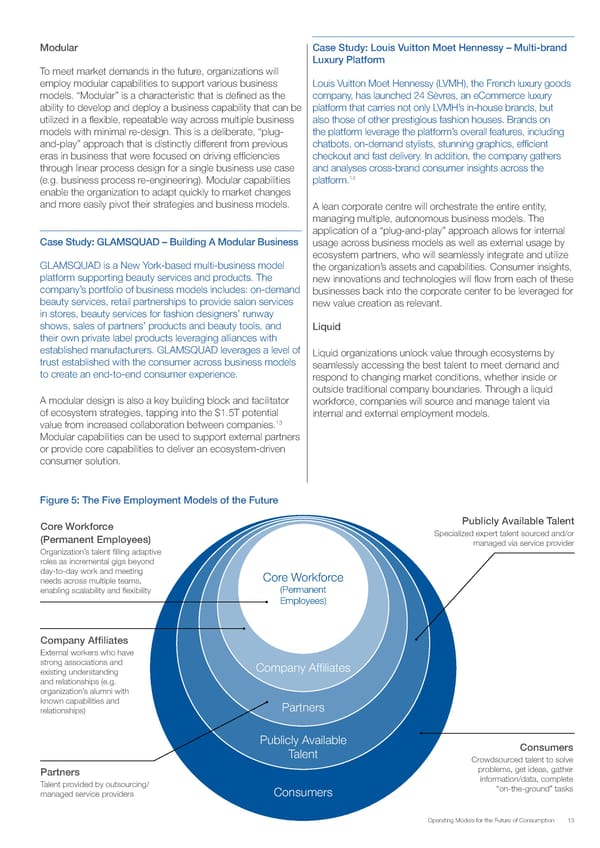Modular Case Study: Louis Vuitton Moet Hennessy – Multi-brand Luxury Platform To meet market demands in the future, organizations will employ modular capabilities to support various business Louis Vuitton Moet Hennessy (LVMH), the French luxury goods models. “Modular” is a characteristic that is defined as the company, has launched 24 Sèvres, an eCommerce luxury ability to develop and deploy a business capability that can be platform that carries not only LVMH’s in-house brands, but utilized in a flexible, repeatable way across multiple business also those of other prestigious fashion houses. Brands on models with minimal re-design. This is a deliberate, “plug- the platform leverage the platform’s overall features, including and-play” approach that is distinctly different from previous chatbots, on-demand stylists, stunning graphics, efficient eras in business that were focused on driving efficiencies checkout and fast delivery. In addition, the company gathers through linear process design for a single business use case and analyses cross-brand consumer insights across the (e.g. business process re-engineering). Modular capabilities platform.14 enable the organization to adapt quickly to market changes and more easily pivot their strategies and business models. A lean corporate centre will orchestrate the entire entity, managing multiple, autonomous business models. The application of a “plug-and-play” approach allows for internal Case Study: GLAMSQUAD – Building A Modular Business usage across business models as well as external usage by ecosystem partners, who will seamlessly integrate and utilize GLAMSQUAD is a New York-based multi-business model the organization’s assets and capabilities. Consumer insights, platform supporting beauty services and products. The new innovations and technologies will flow from each of these company’s portfolio of business models includes: on-demand businesses back into the corporate center to be leveraged for beauty services, retail partnerships to provide salon services new value creation as relevant. in stores, beauty services for fashion designers’ runway shows, sales of partners’ products and beauty tools, and Liquid their own private label products leveraging alliances with established manufacturers. GLAMSQUAD leverages a level of Liquid organizations unlock value through ecosystems by trust established with the consumer across business models seamlessly accessing the best talent to meet demand and to create an end-to-end consumer experience. respond to changing market conditions, whether inside or outside traditional company boundaries. Through a liquid A modular design is also a key building block and facilitator workforce, companies will source and manage talent via of ecosystem strategies, tapping into the $1.5T potential internal and external employment models. 13 value from increased collaboration between companies. Modular capabilities can be used to support external partners or provide core capabilities to deliver an ecosystem-driven consumer solution. Figure 5: The Five Employment Models of the Future Core Workforce Publicly Available Talent (Permanent Employees) Specialized expert talent sourced and/or managed via service provider Organization’s talent filling adaptive roles as incremental gigs beyond day-to-day work and meeting Core Workforce needs across multiple teams, enabling scalability and flexibility (Permanent Employees) Company Affiliates External workers who have strong associations and Company Affiliates existing understanding and relationships (e.g. organization’s alumni with known capabilities and Partners relationships) Publicly Available Consumers Talent Crowdsourced talent to solve Partners problems, get ideas, gather Talent provided by outsourcing/ information/data, complete managed service providers Consumers “on-the-ground” tasks Operating Models for the Future of Consumption 13
 Operating Models for the Future of Consumption Page 12 Page 14
Operating Models for the Future of Consumption Page 12 Page 14